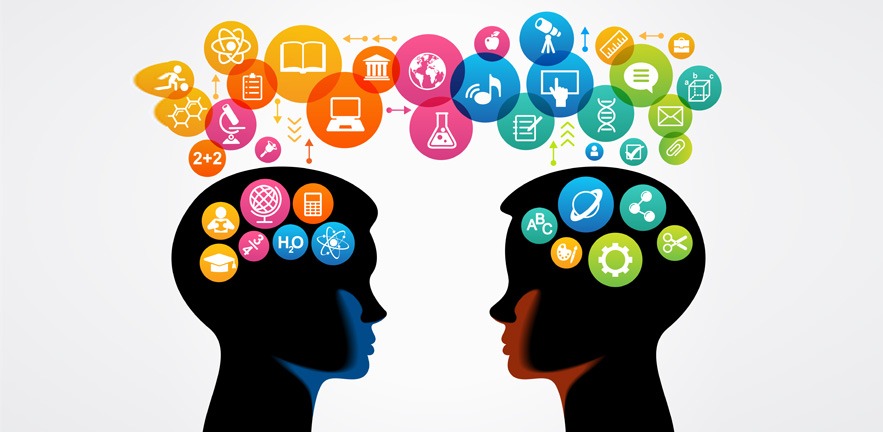By Ahsan Zaman, Executive Director of WORLD MEDIA ONLINE

The Internet of Things (IoT) is a multi-trillion-dollar market opportunity. Cisco predicts it to be worth US$14.4 trillion by 2022, with McKinsey forecast at US$11 trillion by 2025. Goldman Sachs points to Industrial IoT market alone at US$2 trillion by 2020.
Smart Homes, Connected Cars and Digital Health are few of the many industry verticals where IoT, wearables and connected devices are playing a major role in transforming our lives.
Building on this momentum of digital transformation, ‘disruption’ is the key theme for many of the hundreds (if not thousands) of startups and incumbent technology giants across the globe. Companies like Hive, Uber, Ring, Apple Watch, Tesla, Philips, Amazon and Microsoft are some of the prime examples where IoT is already beginning to have an impact on our lives.
Add to this scenario algorithms and artificial intelligence (AI), and one only begins to understand the enormous scope of changing consumer behaviour and the emerging shifts in lifestyle patterns, both in developed and developing world – potentially also impacting the supply/demand curves in many industries globally.
A classic example of these shifts (caused by IoT) in consumer behaviour is the smart home thermostat by Hive, where we can now control our home heating system, lights, locks and boiler via an app on our mobile phone, literally from anywhere in the world. Hive is now owned by UK utility giant British Gas. Imagine the impact this would eventually have on B&Q store sales, not to mention many other vendors selling through B&Q.
Ring (Ring.com) is another great example of transforming the door bell experience by allowing us to see who rings our home door bell – on our mobile phone any where in the world – and interact with them on live video. Ring is already in huge demand – and perhaps causing sleepless nights to senior management at major home security and alarm firms across Europe.
Similarly, we can now lock our connected cars via mobile phone/ wearable watch apps, and use the app to track and monitor car’s various KPIs, as well as use the car connectivity to work, shop and engage socially on the internet, whilst on the move. Autonomous cars/buses/trucks are another example of this disruption (albeit not yet mainstream).
In healthcare, we are now witnessing how artificial pancreas by Dexcom releases insulin via IoT to the person wearing it, suffering from diabetes. Wearable health devices, bands and watches by Fitbit, Nike, Jawbone, Microsoft, Apple, Samsung and Philips monitor our heart rates, temperature and fitness levels 24/7. Vitameter and Omron are already offering consumers digital health devices (connected to the internet) at much cheaper rates than previously available.
These and many other digital products & services are only the tip of the iceberg, that we now call the ‘Internet of Things (IoT)’. Most of these products and services may not be mainstream yet, however early adopters and tech savvy segments of the population have already created a huge demand in the market for IoT related products and services.
Artificial intelligence (AI) and IoT
In the midst of all these developments, in 2016 Amazon launched “Amazon Echo”, a wireless speaker and voice command device from Amazon. What’s fascinating about Amazon Echo is that it is static, unlike a mobile/wearable device, meant to be kept at home, more like a personal assistant.
For example, we can ask Amazon Echo anything from the weather, to news, to cooking recopies, to finding people, places or any other factual information on the internet. And it will talk back to us with that info instantaneously, literally like the Star Trek character “Data”. The only notable difference being that Amazon Echo’s voice activated personal assistant is called “Alexa”, and not “Data”.
So any question/command is carried out by saying for example: “Alexa… what is the weather in Cambridge City today?”
In addition to asking for information on the internet, we can command Amazon Echo to play any music, do regular groceries shopping and, even book hotels or flights. In other words, it’s the same (daily) things (most of them) that we used to do on our mobile or desktops, that we could now do without. (and that means without the need to sit in front of a screen).
This, above everything else, could be a paradigm shift in our behaviour, because it reduces our dependence on mobiles, laptops and desktops to do the following tasks (without a screen) at home (or wherever Amazon Echo is):
- find information on the Internet
- engage socially i.e. to communicate with friends/colleagues
- play music/other media
- control our home lighting, heating and boiler
- to do shopping (at least basic groceries for now)
- to add reminders, meeting planners, things to do to our schedule
- change TV channels
- have conference calls
Amazon Echo can also potentially read out loud our basic health vital signs, from the smart/health watch that we wear, connected to the Internet. For example, we could ask Amazon Echo: “Alexa, what is my temperature and heart rate right now?”
Fast forward a year or two, and add to this scenario Philips Health Watch and Google/Novartis’s upcoming eye contact lens for monitoring sugar levels via CGM, and one could also ask Amazon Echo: “Alexa, what is my sugar level and blood pressure right now?”
What essentially is happening here, is that we, as consumer and users, could now gradually move away from the three screens, i.e. mobile, tablets and desktops, and start using the AI assisted gadgets/devices embedded in our homes, offices and cars, to find info and do our basic daily tasks.
Say on average, we look 150 times into our mobile/laptop screens per day. Imagine this habit dropping by 20 per cent in the next five years, and 50 per cent in the next 10 years, and 70 per cent in next 15 years. The repercussions would be enormous – both for consumers and businesses, and the macro economies at large.
To begin with, the demand for mobiles/tablets would drop, because this whole notion of mobility would blend in seamlessly with our environments, reducing the need for us to carry mobiles and tablets. Simultaneously, the demand would then increase instead for AI enabled wearable and connected devices.
This potential change in consumer behaviour is perhaps is the single biggest reason why Google in 2014 bought Nest (a smart thermostat company) for US$3.2 billion and DeepMind (an artificial intelligence company) for US$600 million, to both contain disruption, and enter the new markets i.e. the Internet of Things, Smart Home, Digital Health and Autonomous Vehicles, to name just a few.
Now imagine a scenario for Google, where we all started searching internet via Amazon Echo 30 times a day, and reduced using a screens/apps like mobiles or tablets by 30 times a day. Or a scenario, where we use Amazon Echo to communicate directly with our home, car and our connected things. The repercussions would be huge for Google.
Why? Because Google’s 97 per cent revenue comes from search advertising, and that, depends on us using the Internet on a screen, where Google can show us text and/or display ads.
Where there is no screen, there are no ads. Full stop! Perhaps in that context spending US$4 billion on two startups made perfect sense for Google.
Foreseeing this third wave of internet, British Gas also acquired Hive because Smart Home is the next, logical frontier for British Gas. And Samsung paid US$200 million for SmartThings, an IoT company focused on Smart Home market.
Similarly, Nokia acquired Withings, a smart watch company, in 2015 for US$191 million because Nokia’s smart phone business has lost almost all its market share to Samsung, Apple and other vendors. Nokia hopes to revive its fortunes with wearables and the emerging digital health sector associated so much with wearables and IoT.
And only recently Google (this November) has now also launched ‘Google Home’, to compete with Amazon Echo in the smart home market.
These acquisitions and disruptions however, are not merely a matter of competition, market share and profits. It is much more than that.
These disruptions caused by IoT coupled with AI and algorithms are about new services, new products, and essentially new, fast expanding markets. It’s about big data, precision marketing, personalised medicine, autonomous vehicles, digital health/fitness, and other emerging opportunities in the global economy, where resources are limited with an ever growing population. And this is where IoT related innovation and disruption could also perhaps play its role in enabling the ‘Circular Economy‘ notion.
What the social impact of these IoT technologies and the subsequent shifts in consumer behaviour will be, is another debate. Whether we as societies and economies are more secure & prosperous, or more prone to hacking/fraud, and more jobs cuts or recession, only time will tell.
How IoT will impact global economies, their trade and power balance, migration and resources, is yet again another big, valid question.
At the end of the day however, what matters most is to understand what the bottom line is. And the ultimate bottom line for both humans and businesses will perhaps invariably remain the same: survival of the fittest!



Leave a Reply